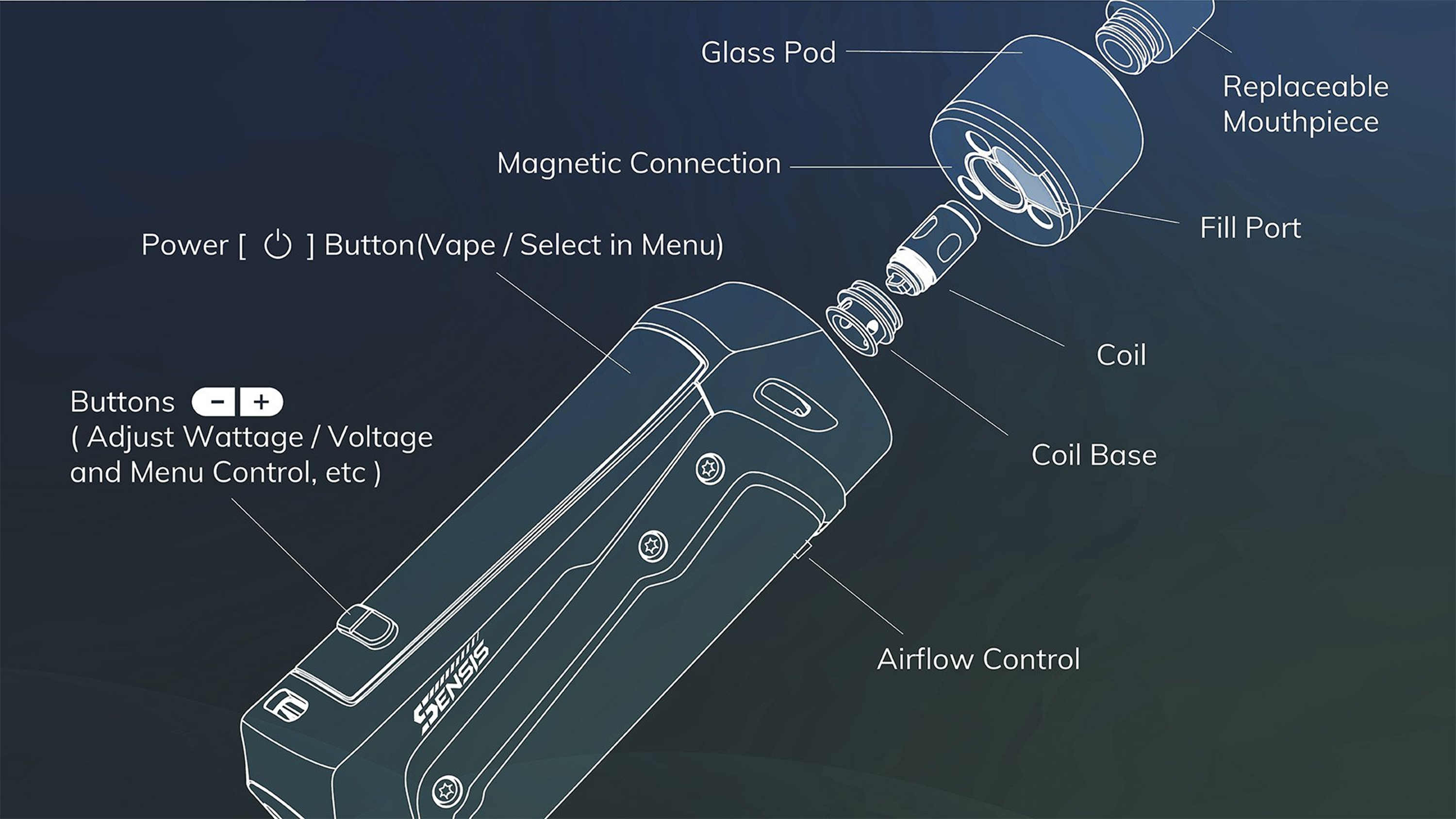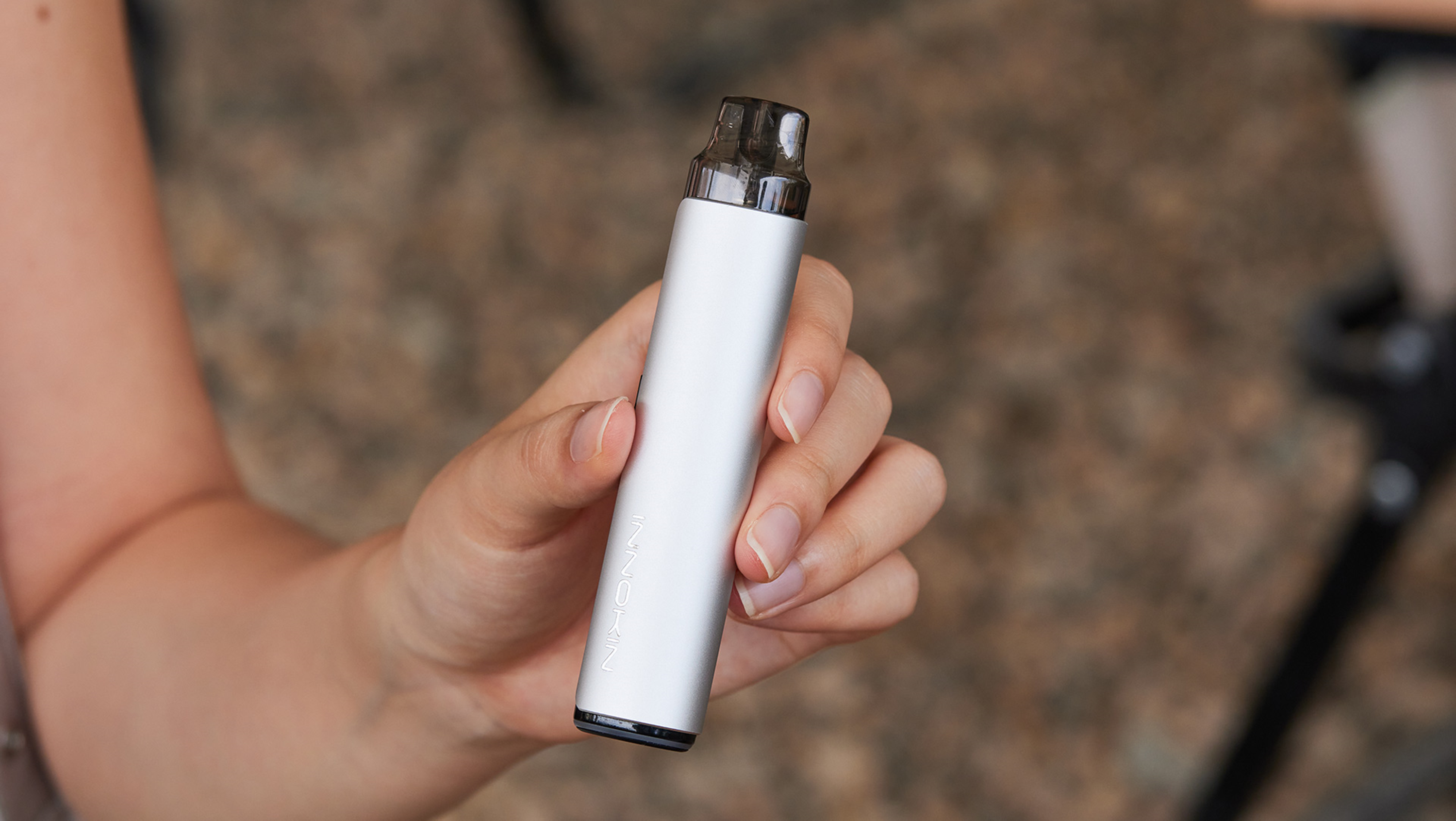Vape Parts Explained: How Does a Vape Work?


What Are the Parts of a Vape, and How Do They Work?
With that basic definition out of the way, let’s explore how vaping works a bit more deeply by discussing the parts of a vape and how they interact with each other. These general descriptions apply to most types of vaping devices including vape pens, vape mods and pod vapes. Disposable vapes tend to have a few small differences from other types of vapes, though, so we’ll discuss them separately below.
These are the parts of a vape.
The Battery
The battery supplies the power that makes a vaping device work. It’s common for a vaping device to have a permanent built-in battery, although there are also devices with removable batteries. A vaping device commonly has a USB port for charging, but you can use an external charger to charge a removable battery if you prefer. Depending on the capacity of the battery and your device’s settings, you can usually use a vaping device for a full day before charging the battery. If you have a vaping device with adjustable wattage, you can increase the device’s battery life by vaping at a lower wattage.
The Logic Board, Integrated Circuit and Firmware
A vaping device is an electronic gadget, so it requires certain components in order to control its functions. Inside a vape, you’ll find a logic board and integrated circuit that look a bit like miniature versions of the motherboard and processor in your computer. Those components combine with a type of hard-coded programming called firmware to control the device’s functions. The main function of a vaping device’s logic subsystem is ensuring the safe delivery of power from the battery to the heating element. To accomplish that, the integrated circuit and firmware may include the following safety functions.
- An automatic timer to prevent long puffs that could cause overheating
- A temperature monitor to shut the device down if it overheats
- A battery monitor to check the cell’s voltage during use and charging
- A circuit to manage the charging process and stop charging when the battery is full
- A current monitor to ensure that the connected coil won’t draw an unsafe current
- A resistance checker to ensure that the connected coil is within the device’s supported resistance range and doesn’t have a short circuit
The safety subsystem in a vaping device needs to engage itself before the device begins to produce vapor, so the device runs through all of the safety checks listed above when you puff on it or press the fire button. If the safety checks pass, the device produces vapor. If not, the device blinks or displays an error message. The entire process is completed in just a fraction of a second.
The Threading or Pod Contacts
Except in all-in-one devices with permanently attached tanks like the Innokin S1, the top of a vaping device will have threading for a twist-on tank or a chamber for a drop-in pod. If the device is a pod system, it’ll have one or more metal plates that connect to the attached pod. If the device uses a traditional vape tank, the center of the threading has a spring-loaded center pin that connects to a pin at the bottom of the tank. The pin or contact is designed for high electrical conductivity and is often made from copper with gold plating.
The Reservoir and Chimney
A vape tank or pod consists of three main components: the reservoir, the airflow system and the coil assembly. Because the coil assembly is the most important component, we’ll discuss it separately in the next section. The reservoir is the main glass or plastic body of the tank or pod. It’s responsible for holding your device’s e-liquid. The airflow system consists of the intake vent at the bottom of the tank or pod and the chimney leading from the coil assembly to the mouthpiece. The coil assembly manages the flow of e-liquid in the tank or pod, ensuring that the vape juice enters the coil as it’s needed and that the tank or pod doesn’t leak.
The Coil Assembly
The coil assembly is the main part of a vape tank or pod, and the primary components of the coil assembly are the wick and the heating element. When you examine a vape coil, you’ll notice that it has holes on the side. Through the holes, you can see the coil’s white cotton wick. E-liquid saturates the wick by traveling though the holes. Once the wick is completely wet, though, a weak vacuum forms inside the tank or pod and prevents the e-liquid from continuing to flow, which would flood the coil assembly and cause a leak.
The heating element is the component of a vape coil that produces vapor. The wick is wrapped around the heating element, and it supplies the element with e-liquid. When the device is activated, the element becomes hot and vaporizes the e-liquid in the wick. The resulting vapor travels through the chimney and exits the tank or pod through the mouthpiece.
Bringing It All Together: How Vaping Works
- The device runs through a battery of safety checks to ensure that you can vape safely. As described above, the safety checks include checking the health of the battery and scanning the resistance of the connected coil to ensure that it won’t cause an unsafe current. The device only works if the safety checks pass.
- If it’s safe to vape, the device channels power from the battery to the heating element. When electricity passes through the element, it becomes hot and vaporizes the e-liquid suspended in the wick.
- When you inhale through the mouthpiece, air travels through the intake vents at the bottom of the tank or pod. The air moves through the coil assembly and out of the chimney, carrying the vapor to your mouth.
- When you release the fire button or stop puffing, the wick in the coil assembly is dry. The wick absorbs e-liquid from the reservoir, decreasing the level of vape juice slightly. This continues until the tank or pod is empty, and at that point, you need to refill it.
 USD
USD





